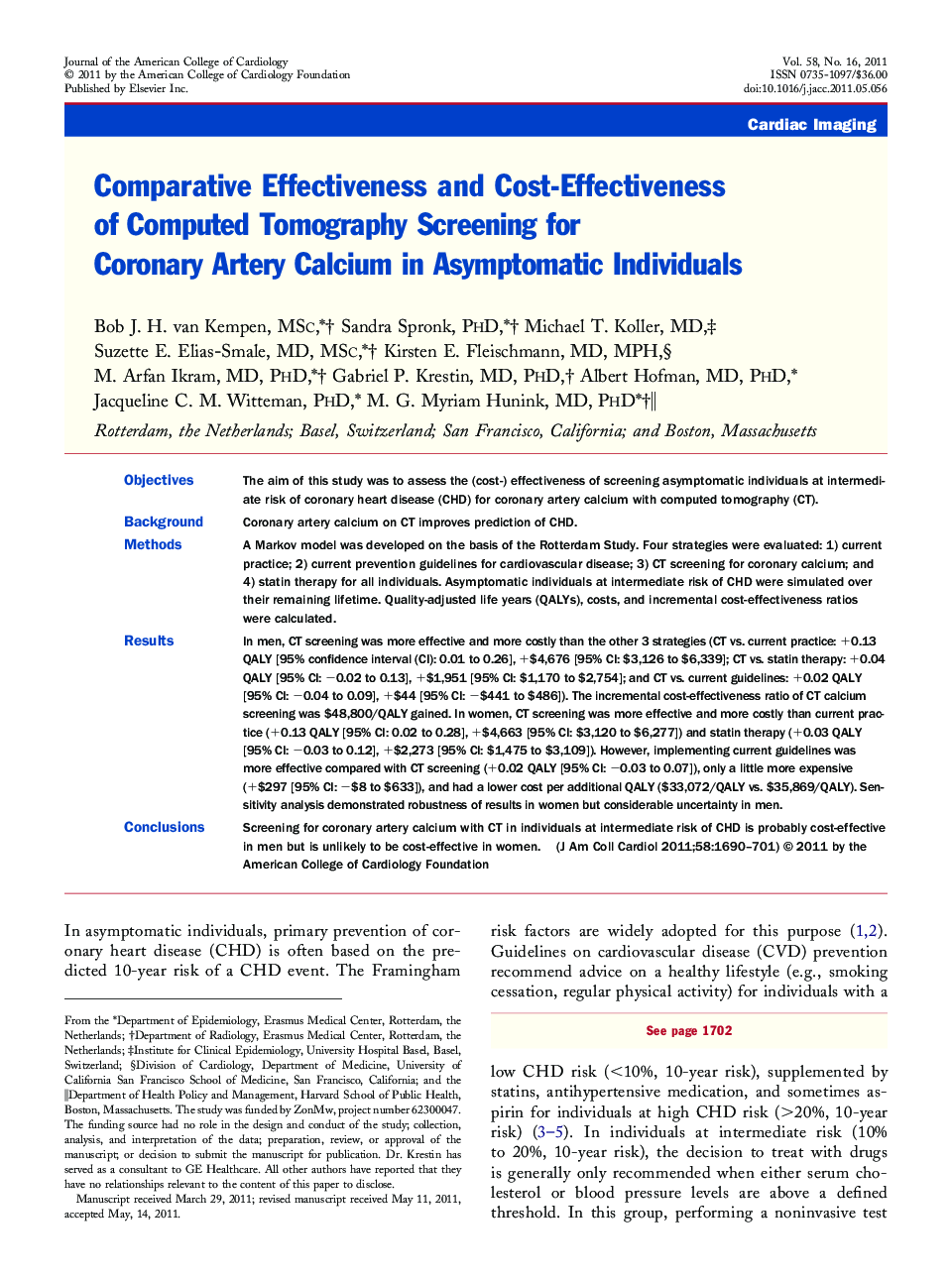| Article ID | Journal | Published Year | Pages | File Type |
|---|---|---|---|---|
| 2947678 | Journal of the American College of Cardiology | 2011 | 12 Pages |
ObjectivesThe aim of this study was to assess the (cost-) effectiveness of screening asymptomatic individuals at intermediate risk of coronary heart disease (CHD) for coronary artery calcium with computed tomography (CT).BackgroundCoronary artery calcium on CT improves prediction of CHD.MethodsA Markov model was developed on the basis of the Rotterdam Study. Four strategies were evaluated: 1) current practice; 2) current prevention guidelines for cardiovascular disease; 3) CT screening for coronary calcium; and 4) statin therapy for all individuals. Asymptomatic individuals at intermediate risk of CHD were simulated over their remaining lifetime. Quality-adjusted life years (QALYs), costs, and incremental cost-effectiveness ratios were calculated.ResultsIn men, CT screening was more effective and more costly than the other 3 strategies (CT vs. current practice: +0.13 QALY [95% confidence interval (CI): 0.01 to 0.26], +$4,676 [95% CI: $3,126 to $6,339]; CT vs. statin therapy: +0.04 QALY [95% CI: −0.02 to 0.13], +$1,951 [95% CI: $1,170 to $2,754]; and CT vs. current guidelines: +0.02 QALY [95% CI: −0.04 to 0.09], +$44 [95% CI: −$441 to $486]). The incremental cost-effectiveness ratio of CT calcium screening was $48,800/QALY gained. In women, CT screening was more effective and more costly than current practice (+0.13 QALY [95% CI: 0.02 to 0.28], +$4,663 [95% CI: $3,120 to $6,277]) and statin therapy (+0.03 QALY [95% CI: −0.03 to 0.12], +$2,273 [95% CI: $1,475 to $3,109]). However, implementing current guidelines was more effective compared with CT screening (+0.02 QALY [95% CI: −0.03 to 0.07]), only a little more expensive (+$297 [95% CI: −$8 to $633]), and had a lower cost per additional QALY ($33,072/QALY vs. $35,869/QALY). Sensitivity analysis demonstrated robustness of results in women but considerable uncertainty in men.ConclusionsScreening for coronary artery calcium with CT in individuals at intermediate risk of CHD is probably cost-effective in men but is unlikely to be cost-effective in women.
